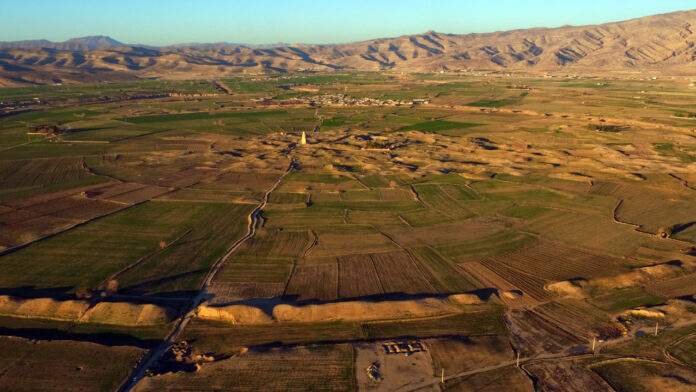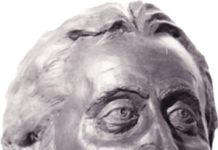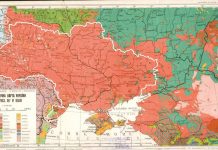The picture in the previous article shows how the round city of Baghdad looked in 768 AD after its construction was completed. The city’s massive outer walls were 30m high. The city’s circumference was over 6km. Several of the One Thousand and One Nights tales, also known as the Arabian Nights, were set in Baghdad you see in the picture. Although 11th-century scholar Al Khatib al Baghdadi in his History of Baghdad stated that the circular design of Baghdad was innovative and “they say and no other round city is known in all regions of the world,” he was mistaken. Just a couple of hundred years before the foundation of Baghdad there had existed a similar-looking city. Its name was Gur (or Gor, modern Firuzabad) located some 1,000 km to the south of Baghdad. The circular citadel city of Gur was the first capital of the Sassanid Empire and the foundation of that city is simply fascinating. According to Wikipedia, Gur “dates back to the Achaemenid era and was situated in a low-lying area of the region, so, during his invasion of Persia, Alexander the Great was able to drown the city by directing the flow of a river into the city. The lake he created remained until Ardashir I built a tunnel to drain it. He founded his new capital city on the same site. Ardashir’s new city was known as Khor Ardashīr, Ardashīr Khurrah and Gōr. It had a circular plan so precise in measurement that the Persian historian Ibn Balkhi wrote it to be “devised using a compass”. It was protected by a trench 50 meters in width and was 2 kilometers in diameter. The city had four gates; to the north was the Hormozd Gate, to the south the Ardashir Gate, to the east the Mithra Gate, and to the west the Wahram Gate. The royal capital’s compounds were constructed at the center of a circle 450 m in radius. At the center of the town, there was a lofty platform or tower, called Terbal. It was 30 m high and spiral in design. The design is unique in Iran, and there are several theories regarding the purpose of its construction. It is thought to have been the architectural predecessor of the Great Mosque of Samarra of Iraq and its distinctive minaret, the malwiya. In the Sasanian period, the abbreviation ART (in Inscriptional Pahlavi) was used as the mint signature to refer to Gōr. Gōr and Istakhr strenuously resisted the invading Arab Muslims in the 630s and 640s; they were conquered by Abdallah ibn Amr in 649–50.”
A couple of interesting facts about Ardashir I, the founder of Gur, are worth mentioning. According to the facts in Wikipedia, before the insurrection, he had been a commander of Fort Darabgard, one of the cities of the Parthian Empire that was also circular in shape. The structure of Gur was inspired by the architectural method of Darabgard and contained circular walls that surrounded an area with a diameter of about two kilometers and a double muddy wall and a trench with a Parthian style and two axes dividing the perpendicular intersection of the city to four sectors with four main gates.
In 224 AD, Ardashir defeated the last Parthian king and established the Sasanian dynasty.
“In Ardashir’s period, the title “Iran” was chosen for the region under the Sasanian rule.” The Iran Wikipedia page adds that “the term Iran derives from Middle Persian Ērān, first attested in a third-century inscription at Naqsh-e Rostam, with the accompanying Parthian inscription using the term Aryān, in reference to the Iranians.”
Who were the Parthians and where did they come from? We will try to answer those questions in the following article. Meanwhile, here is an intriguing fact – in one of the barrows near Kyiv, archaeologista discovered a royal hat with the regalia resembling the one worn by a Parthian prince. Unique Royal Hat of a Rus Ruler >










